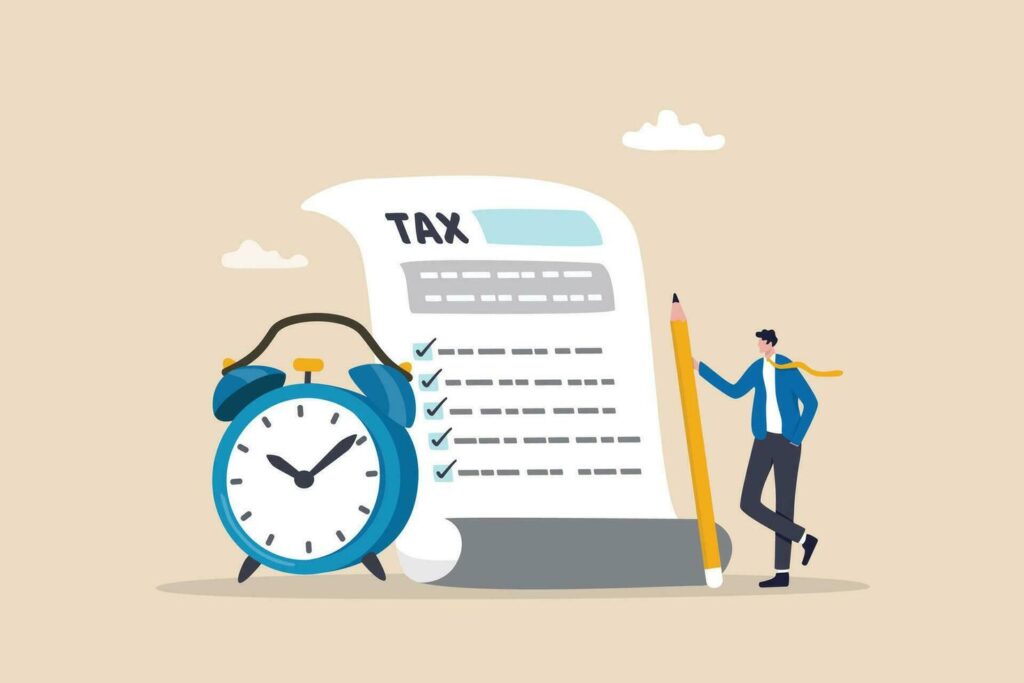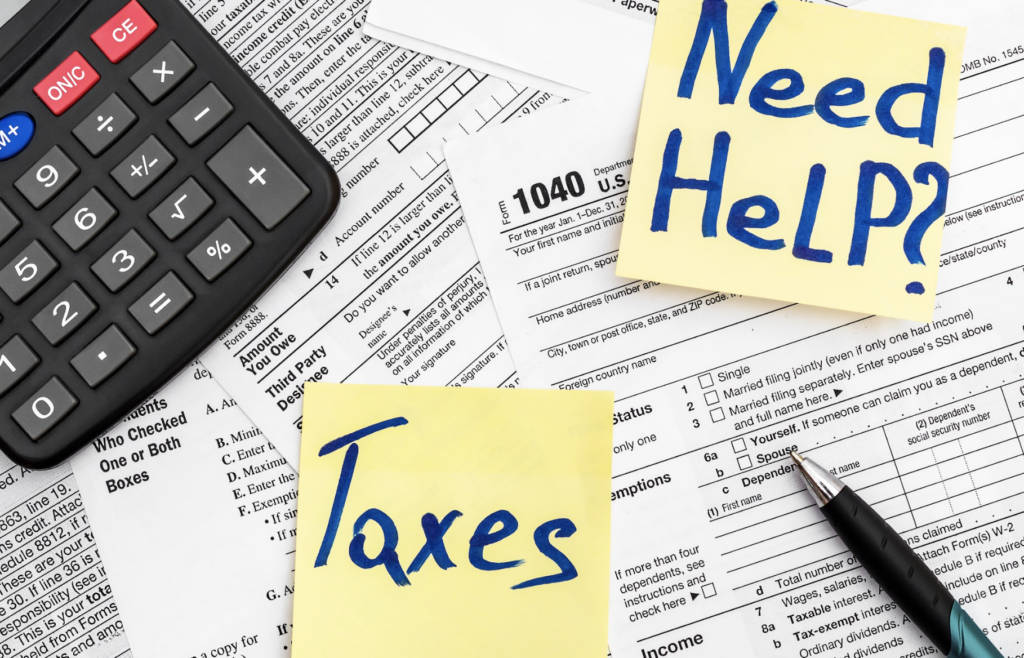Crafting a tax plan that is tailored to your personal financial situation is crucial for maximizing your savings and minimizing your tax liability. By understanding the basics of tax planning and assessing your financial situation, you can set achievable tax goals and implement an effective tax strategy.
In this article, we will explore the key components of a tax plan and provide tips on reviewing best tax management company for adjusting your plan as needed.
Understanding the Basics of Tax Planning
Tax planning is the process of analyzing your financial situation and taking advantage of available tax strategies to minimize the amount of tax you have to pay. It involves considering various aspects of your finances, such as your income, deductions, credits, and investments, to develop a comprehensive tax strategy.
When it comes to tax planning, there are several important factors to consider. One of the key aspects is understanding the current tax laws and regulations. Tax laws can change frequently, and staying up to date with the latest changes is crucial to ensure that you are taking advantage of all available tax-saving opportunities.
Another important consideration in tax planning is the timing of your financial decisions. By carefully timing your income and expenses, you can potentially reduce your tax liability. For example, if you have control over the timing of a bonus or a large expense, you may be able to strategically plan to minimize your tax burden.

The Importance of Personalized Tax Planning
A one-size-fits-all approach to tax planning may not be suitable for everyone. Personalized tax planning takes into account your unique financial circumstances, goals, and objectives. By tailoring your tax plan to your specific situation, you can optimize your tax savings and ensure that you are maximizing your available credits and deductions.
One of the key benefits of personalized tax planning is the ability to identify and take advantage of tax credits and deductions that are specific to your situation. For example, if you are a homeowner, you may be eligible for deductions related to mortgage interest and property taxes. By understanding and utilizing these deductions, you can significantly reduce your taxable income.
Additionally, personalized tax planning allows you to consider long-term financial goals and objectives. For example, if you are planning for retirement, you may want to explore tax-advantaged retirement accounts, such as IRAs or 401(k)s. By contributing to these accounts, you can potentially reduce your current tax liability while saving for the future.
Key Components of a Tax Plan
A well-rounded tax plan includes several key components. Firstly, it is essential to identify your tax bracket, as this will determine the tax rate you pay on your income. Understanding your tax bracket allows you to effectively plan your income and deductions to minimize your tax liability.
Next, evaluating your income sources is crucial for determining if you have any taxable events, such as capital gains or dividends. By understanding the tax implications of different types of income, you can make informed decisions about when and how to generate income.
In addition to income, deductions play a significant role in tax planning. Deductions are expenses that can be subtracted from your taxable income, reducing the amount of tax you owe. Common deductions include mortgage interest, state and local taxes, and medical expenses. By identifying and maximizing your deductions, you can lower your taxable income and potentially reduce your tax liability.
Another important component of a tax plan is considering tax-advantaged investment strategies. Certain investment vehicles, such as individual retirement accounts (IRAs) and 529 college savings plans, offer tax advantages that can help you save for retirement or education expenses while reducing your tax liability.
Lastly, tax planning should also include a review of your estate planning strategies. Estate taxes can significantly impact the transfer of wealth to your beneficiaries. By implementing effective estate planning strategies, such as trusts or gifting strategies, you can potentially minimize estate taxes and ensure a smooth transfer of assets.
Assessing Your Financial Situation
Assessing your financial situation is the first step in creating a tax plan that works for you. This involves analyzing your income, expenses, assets, and liabilities to gain a comprehensive understanding of your overall financial health.
When assessing your financial situation, it’s important to consider not only your current income and expenses but also your future financial goals. By evaluating your financial goals, you can determine how your tax plan can help you achieve them. Whether you’re saving for retirement, planning to buy a home, or funding your children’s education, understanding your financial situation will allow you to make informed decisions.
In addition to analyzing your income and expenses, it’s important to evaluate your assets and liabilities. Your assets include things like cash, investments, real estate, and personal property. Understanding the value and tax implications of your assets can help you make decisions about how to maximize their potential. On the other hand, your liabilities include things like mortgages, loans, and credit card debt. By assessing your liabilities, you can determine how they may impact your overall financial situation and make necessary adjustments.

Identifying Your Tax Bracket
Your tax bracket is determined by your taxable income and is used to calculate the amount of tax you owe. By knowing your tax bracket, you can make strategic decisions about your income and deductions to minimize your tax liability and potentially move into a lower tax bracket.
Understanding how tax brackets work is essential for effective tax planning. Tax brackets are progressive, meaning that as your income increases, the percentage of tax you owe also increases. By carefully managing your income and deductions, you can potentially lower your taxable income and move into a lower tax bracket. This can result in significant tax savings.
It’s important to note that tax brackets can change from year to year due to updates in tax laws. Staying informed about any changes to the tax brackets can help you make informed decisions about your tax planning strategies.
Evaluating Your Income Sources
When evaluating your income sources, it’s important to consider the tax implications of each. Different types of income, such as wages, self-employment income, investments, and rental income, may be subject to different tax rates. By understanding how each source is taxed, you can make informed decisions about timing income and taking advantage of any available deductions or credits.
For example, if you have self-employment income, you may be eligible for certain deductions and credits that can help reduce your tax liability. Understanding the specific tax rules and regulations related to self-employment income can help you take full advantage of these opportunities.
Similarly, if you have investment income, you may need to consider the tax implications of capital gains and dividends. By carefully managing your investment portfolio and understanding the tax rules, you can potentially minimize your tax liability and maximize your investment returns.
When it comes to rental income, there are specific tax rules that apply. Understanding how rental income is taxed, including any deductions and credits available, can help you make informed decisions about rental property investments and ensure compliance with tax regulations.
Overall, evaluating your income sources is crucial for effective tax planning. By understanding the tax implications of each income source, you can make strategic decisions that align with your financial goals and minimize your tax liability.
Setting Your Tax Goals
Once you have assessed your financial situation, it’s time to set achievable tax goals. Your tax goals should align with your overall financial goals and take into account any specific tax-saving opportunities that are relevant to your situation.
Setting tax goals is an essential step in effective tax planning. It allows you to establish clear objectives and strategies to minimize your tax liability and maximize your tax savings. By setting realistic and achievable goals, you can ensure that your tax planning efforts are focused and effective.
When setting your tax goals, it’s important to consider your current financial situation and future financial aspirations. Are you looking to save for retirement, purchase a home, or start a business? Understanding your financial goals will help you determine the most appropriate tax-saving strategies to implement.
Reducing Taxable Income
Reducing your taxable income is a key goal of tax planning. By minimizing your taxable income, you can potentially lower your tax liability and keep more money in your pocket. There are several strategies you can use to reduce your taxable income, such as contributing to tax-advantaged retirement accounts, maximizing deductions, and taking advantage of tax credits.
Contributing to tax-advantaged retirement accounts, such as a 401(k) or an Individual Retirement Account (IRA), is a popular strategy for reducing taxable income. These accounts allow you to contribute pre-tax dollars, which lowers your taxable income for the year. Additionally, any earnings within these accounts grow tax-deferred until you withdraw the funds in retirement.
Maximizing deductions is another effective way to reduce taxable income. Deductions are expenses that the IRS allows you to subtract from your taxable income, thereby lowering the amount of income that is subject to taxation. Common deductions include mortgage interest, state and local taxes, medical expenses, and charitable contributions.
Taking advantage of tax credits can also help reduce your tax liability. Unlike deductions, which reduce your taxable income, tax credits directly reduce the amount of tax you owe. This means that a tax credit of $1,000 will lower your tax bill by $1,000. Some common tax credits include the Child Tax Credit, the Earned Income Tax Credit, and the American Opportunity Credit for education expenses.
Maximizing Tax Deductions and Credits
Tax deductions and credits can help lower your overall tax liability. Deductions reduce your taxable income, while credits directly reduce the amount of tax you owe. By identifying all available deductions and credits that you qualify for, you can maximize your tax savings. It’s important to stay informed about any changes in tax laws that may impact the availability of deductions and credits.
One way to maximize tax deductions is to keep track of all eligible expenses throughout the year. This includes maintaining records of medical expenses, business expenses, and any other deductible expenses. By organizing and documenting these expenses, you can ensure that you claim all the deductions you are entitled to.
Similarly, staying informed about tax credits is crucial for maximizing your tax savings. Tax credits can provide significant savings, especially for families with children or individuals pursuing higher education. By researching and understanding the eligibility criteria for various tax credits, you can take full advantage of the credits that apply to your situation.
It’s worth noting that tax laws and regulations are subject to change. It’s important to stay updated on any new tax legislation or revisions that may impact the availability of deductions and credits. Consulting with a tax professional or utilizing reliable online resources can help you stay informed and make informed decisions when it comes to maximizing your tax deductions and credits.

Implementing Your Tax Strategy
Now that you have set your tax goals, it’s time to implement your tax strategy. Implementing your tax strategy involves taking specific actions to optimize your tax savings and minimize your tax liability.
Choosing the Right Tax-Advantaged Accounts
Tax-advantaged accounts, such as individual retirement accounts (IRAs) and 401(k) plans, offer tax benefits that can help you save for retirement and reduce your current tax liability. By choosing the right tax-advantaged accounts based on your financial goals and tax situation, you can take advantage of potential tax savings.
Timing Your Income and Deductions
Timing is an essential aspect of tax planning. By strategically timing your income and deductions, you can potentially lower your tax liability. For example, if you expect your income to be higher in the current year but lower in the following year, you may want to accelerate income into the current year and defer deductions to reduce your tax liability.
Reviewing and Adjusting Your Tax Plan
Reviewing and adjusting your tax plan regularly is important to ensure that it remains effective based on any changes in your financial situation, goals, or tax laws.
When to Review Your Tax Plan
It’s a good practice to review your tax plan annually, especially as you approach the end of the year. This allows you to consider any new tax laws, changes in your financial situation, or upcoming financial goals that may impact your tax plan.
Making Necessary Adjustments
If you identify any necessary adjustments during your tax plan review, it’s important to take action promptly. This may involve reallocating investments, updating your withholding allowances, or making changes to your retirement account contributions. By making the necessary adjustments, you can ensure that your tax plan remains aligned with your financial goals and optimized for tax savings.
In conclusion, crafting a tax plan tailored to your financial situation is essential for maximizing your savings and minimizing your tax liability. By understanding the basics of tax planning, assessing your financial situation, setting achievable tax goals, implementing an effective tax strategy, and regularly reviewing and adjusting your plan, you can optimize your tax savings and ensure that your plan remains aligned with your financial goals.
More to read: Maximising Gains through Expert Debt Recycling

